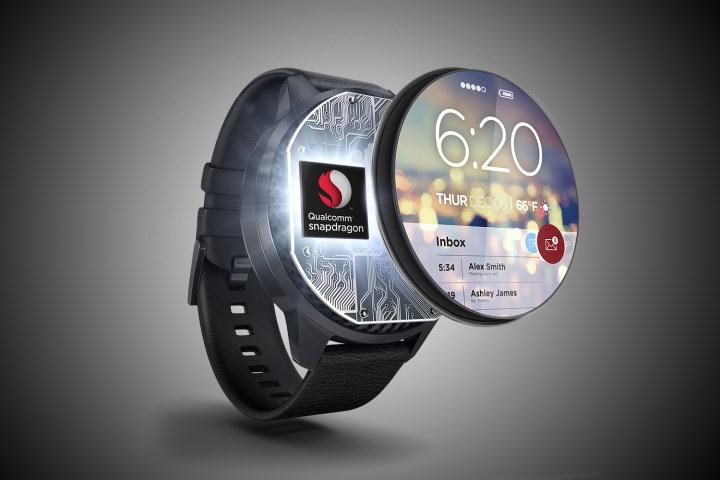
Announced at Computex 2016 in Taiwan, the Snapdragon Wear 1100 is targeted to specific devices. Unlike the Wear 2100, which is meant to power multi-functional smartwatches such as the ones that run Android Wear, the Wear 1100 is meant to sit inside wearables for children and the elderly, and specifically inside fitness trackers that can’t house a large battery.
The Wear 1100 is a smaller and more power-efficient chip thanks to a Power Save Mode. It also has an integrated modem with 3G and LTE global band support, and it supports Bluetooth, Wi-Fi, and voice commands. It will last for seven days on LTE standby, and Qualcomm says the chip also supports its iZat technology, which brings “enhanced accuracy and power optimization.” That will allow the wearable to continuously display the location of the wearer.
It can also use geo-fencing features, which is important for wearables designed for the youthful and the elderly, and it also has an integrated hardware cryptographic engine, “which supports a highly secure environment for consumers.”
The new chip is a part of Qualcomm’s effort to “accelerate” wearable innovation, and the company showcased the 1100 and the 2100 via partnered companies that include Aricent, Borqs, Infomark, and SurfaceInk.
The Snapdragon Wear 1100 is available now and is shipping to Qualcomm customers today.
Editors' Recommendations
- Qualcomm’s newest chip will supercharge budget Android phones
- Qualcomm claims its new chips are 21% faster than Apple’s M3
- Snapdragon X Elite is a showstopper chip arriving at the worst possible time
- Qualcomm says its new chips are 4.5 times faster at AI than rivals
- Google and Qualcomm are changing Wear OS smartwatches forever


